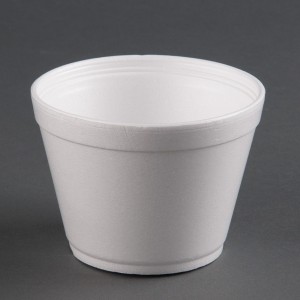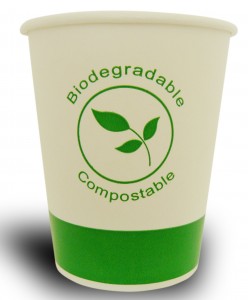
New York City ban on foam containers is good news for paper packaging

In collaboration with Suman Ghosh and Jayant Mukherjee, Lead Analysts -- Packaging
New York City has banned the use and sale of single polystyrene food containers such as "packing peanuts" beginning July this year, sending restaurants and food vendors scrambling for alternative forms of packaging.
Expanded Polystyrene foam articles, also known as polystyrene loose fill packaging, gained prominence owing to growing popularity of take-away food. The ban would mean single-use foam items such as cups, plates, trays, or clamshell containers will go off the shelf in the city.
The City administration also decided that post-consumer polystyrene foam collected in curbside recycling has no market, despite lobbying by chemical manufacturers.
Styrofoam's role in waste reduction and the impact on the local environment has seen a number of U.S. cities banning it.
The ban on foam packaging brings us two scenarios: 1) What would be the next packaging material that would face a similar ban? 2) How effective would it be to bring in the idea of sustainable packaging?
As per Beroe analysis, packaging material and cutlery made out of polypropylene could end up facing similar bans. In other words, items such as plastic spoons, forks and plates also face the danger of regulatory axe in the future. The U.S. government is already monitoring such plastics made from Polyethylene and Polypropylene as their intrinsic toxicity end up harming waterways and marine life.
The fact of the matter is that regulatory uncertainties always hover over those materials which are inherently not environmentally sustainable. And the best way to evade such uncertainties, to some extent, is to opt for sustainable packaging.
There are a number of alternatives for the now banned foam substance: Aluminum containers, Single-walled paper containers with clay or wax coating, Double-walled paper containers and PP/Bio-plastic made thermoformed containers.
Of the above, Double-walled paper containers and thermoformed containers made out of Bio-plastic are good to immediately replace foam containers. And know what? They are also environmentally sustainable relative to Styrofoam.
From a supply and demand perspective, would the scramble for paper containers lead to supply crunch? The answer is No.
As per Beroe analysis, North American paper container industry demand was valued to be around $7 billion in 2014 and is expected to grow at an annual rate of 3-4%. The supply comfortably met the demand in 2014 and the trend is expected to continue till 2016.
We don't foresee supply crunch of Double-walled paper containers as there are more than 100 large integrated manufacturers, converters and distributors in the U.S. Manufacturers such as, IP, MWV, Graphic Packaging, Packaging Corp of America produced more than 70% of the total industry requirement in 2014.
Now let us focus on the larger need for incorporating sustainable packaging in the supply chain.
Nowadays, businesses not only require delivering a profitable return to its stakeholders, but also must achieve this in a sustainable manner. Consequently, measuring energy reduction, waste minimization and water consumption becomes critical to maximize the environmental impact of sustainable packaging.

 Food and beverage industry, which features prominently in the regulatory radar, would benefit the most out of using packages made from sustainable materials. And as a consequence, the industry in general is now considering wider environmental impact of packaging throughout the supply chain.
Food and beverage industry, which features prominently in the regulatory radar, would benefit the most out of using packages made from sustainable materials. And as a consequence, the industry in general is now considering wider environmental impact of packaging throughout the supply chain.
Sustainable efficiency in packaging can be achieved by following the below mentioned criteria:
- The packaging needs to be designed holistically to optimize environmental performance with product
- Should be manufactured from maximum amount of responsibly sourced materials
- Needs to be effective and safe throughout its life cycle
- Needs to be used as a prominent tool for efficient marketing and transportation
- Produces minimum amount of waste
- Needs to be recycled or reused efficiently after use
Collaboration with raw material suppliers and retailers is the key behind developing innovative ideas to make supply chain greener. Hence, optimal packaging requires a combination of strategies including source optimization, material selection, efficient design and recovery of the product. Most of the possible parameters to measure packaging impact are described below. Long story short: packages made out of environmentally friendly materials hold the key to evade any adverse regulatory fallout.
| Tools | Description | Impact on Sustainability |
| Light Weighting | Reduction of raw materials in packaging | Optimization of material usage to achieve right product-to-package ratio.Reduced packaging weight could save on an average 3-4% of raw material, 4-5% of carbon emission and 1-2% of energy |
| Design Optimization | Packaging design to achieve transport efficiency | Design to reduce product wasteOptimized packaging design can increase transport efficiency by 5-7% on an average and can prevent product waste by 8-12% |
| Packaging Integration | Elimination of unnecessary packaging | Elimination of Bio-hazardous materialsReduction of excess secondary packaging and reducing use of less bio-degradable materials like, PVC and PS |
| End life assessment | Reuse or Recycle | Reuse could maximize the benefit expected from packaging sustainability initiativeRecovery of packaging material could save more than 70% of energy and GHG emission on an average |
Related Insights:
View All
Get more stories like this
Subscirbe for more news,updates and insights from Beroe






